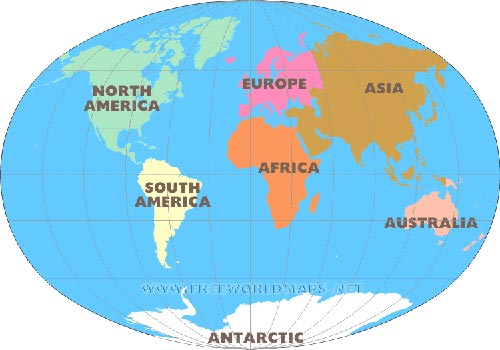continent

A continent is one of the seven major divisions of land on Earth: Africa, Antarctica, Asia, Australia, Europe, North America, and South America. These continents have evolved during Earth's history from a single landmass, Pangea), which broke up (see also plate tectonics). They are concentrated in the Northern Hemisphere. They cover about 30% of the Earth above sea level and extend below sea level forming continental shelves.
All continents have four components which make up the continental crust: 1. Shields – areas of relatively level land within a few hundred meters height above sea level consisting of crystalline rocks that are generally very old, up to 3,800 million years in age; 2. Stable platforms – areas of the continent that have a thin covering of sedimentary rocks which are generally horizontal; 3. Sedimentary basins – broad, deep depressions filled with sedimentary rocks formed in shallow seas that sometimes covered parts of the ancient shields or their margins; 4. Folded mountain belts of younger sedimentary rocks, which typically occur along their margins and consist of long, linear zones of intensely folded and faulted rocks which have been metamorphosed and intruded by igneous and volcanic activity. The continental crust is composed of rocks that are less dense than the basaltic rocks in ocean basins and they appear to be riding on the asthenosphere of the underlying mantle, changing position over the surface of the Earth very slowly by continental drift. Its thickness is mainly between 30–40 km (20–25 mi) except under large mountain chains where the thickness can be 70 km (45 mi).
Continental crust is thought to originate from the subduction of early crust, causing partial melting which released lighter material that punched up through the crust. This material was too light to be subducted and the continents grew by the collision and fusion of these microcontinents.


